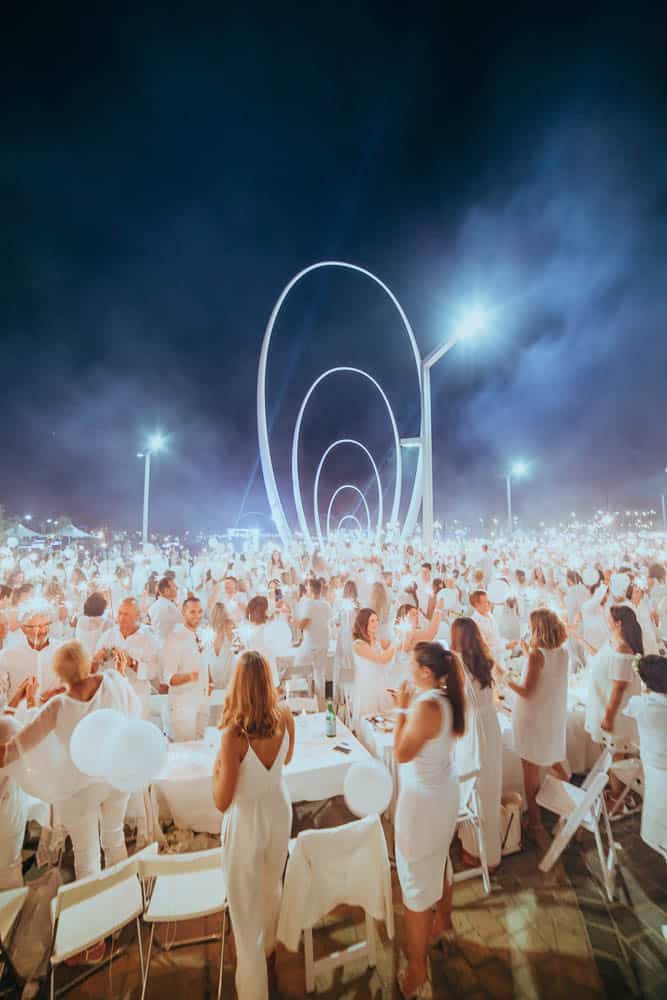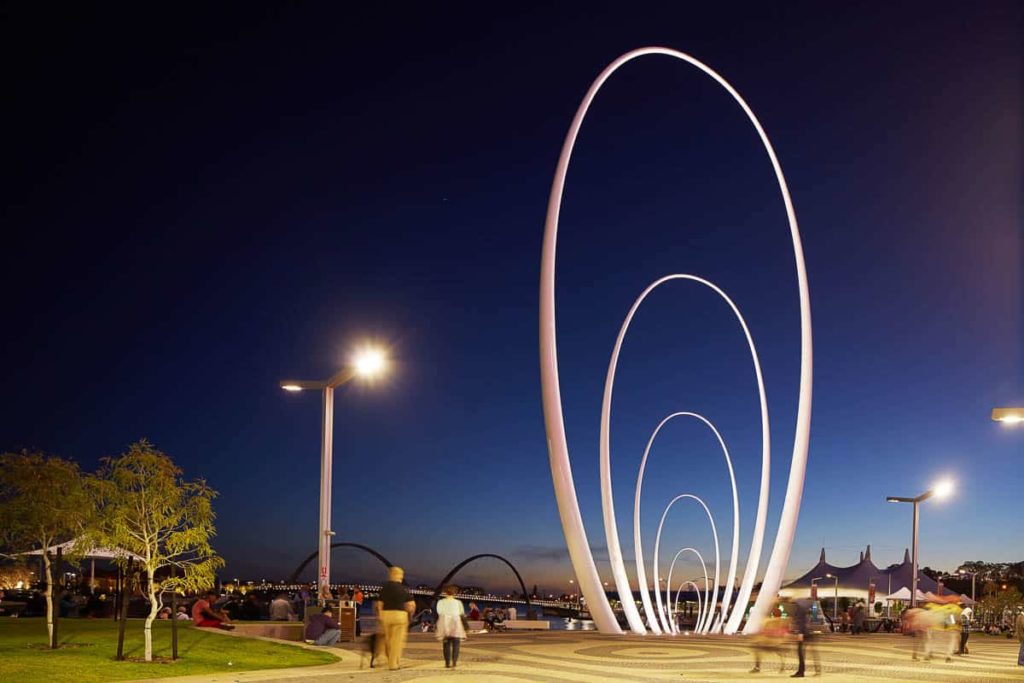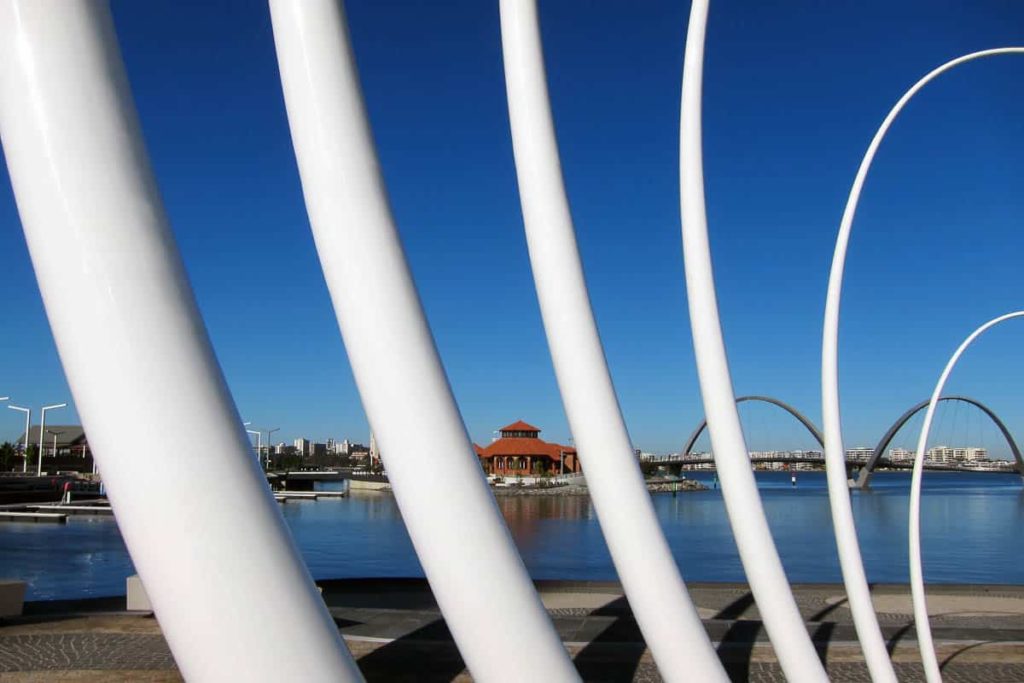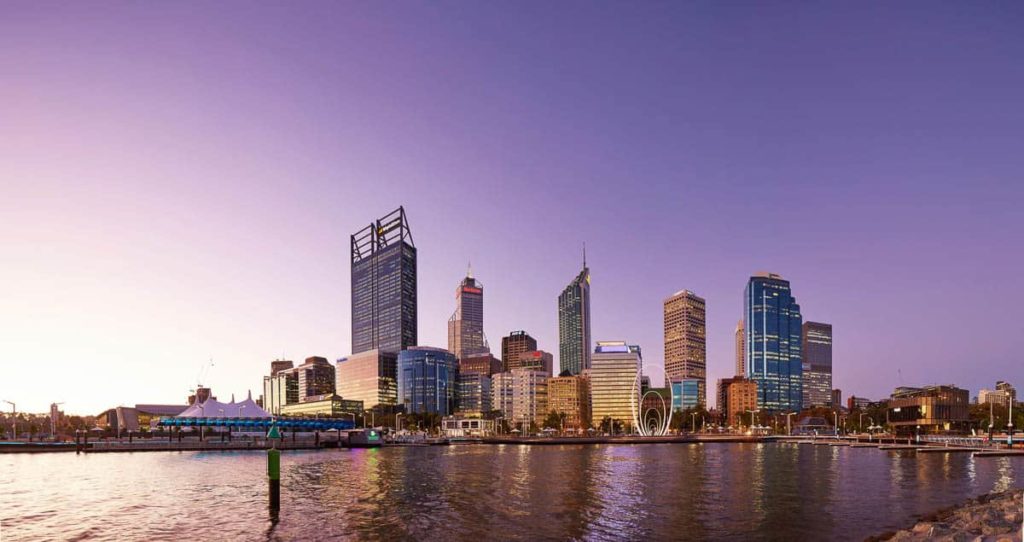Looking at the typically cloudless, bright blue sky sucking moisture out of already dry vegetation and sandy soil my Gujarati friend Ami Shroff on her first visit to Perth looked puzzled yet delighted. “Oh! But it looks just like Gujarat”, she said. She’s right, it does. There is an immediate sense of geographic familiarity between Australia and India born aeons ago before they split along what is now the Western Australian coastline.
“…there have always been strong physical reminders, vibrations in the psyche, of India in the Western Australian landscape”, Joyce Westrip and Peggy Holroyde wrote in their book Colonial Cousins: A Surprising History of Connections between India and Australia. Ancient geological strata are shared, as are flat red plains, startling granite outcrops, eucalypt wooded hills, salt-laden winds, and a relentless sun subdued seasonally by often torrential rains.
In Western Australia, our back is turned against the rest of the country. No snub intended, it’s just where we sit on the coastal edge gazing west, squinting out to the horizon of the Indian Ocean as though looking for those lands that floated away.
All along the southwest seaboard there are subtle reminders of early European settler links to India. The small coastal hamlet of Australind was given its name at a time in the nineteenth century when Indian businessmen were actively seeking to invest in the new Swan River Colony (The first name given to the south west of what is now the state of Western Australia, including the city of Perth), for example.
A little further south is the town of Busselton, named after the prominent settler family, the Bussells, one of who married into the powerful Prinsep family of the East India Company. It was there in early 2012 that artist Lorenna Grant was commissioned to make large-scale internal and external sculptures for the new Health Campus. She named them The Big Healer and the Little Healer.
Intuitive artists like Lorenna sense the ancient vibrations connecting our two lands and instinctively respond. There are limitless meanings inherent in the spiral forms of her Busselton sculptures: local yet universal; simple yet complex; strong yet flowing; sacred yet of the earth. “I have done yoga for many years so for me the sculptures are a visual interpretation of the power of yogic practice”, she says. “When I am in the correct position, I can feel energy move through my spine creating feelings of tranquillity, and balance. It was important that whatever the reason to visit the Health Campus, the metaphysical power of the two Healers would assist personal healing through contemplation and restful gaze.”
“The works evolved through osmosis rather than a conscious design, they are the spiralling spine of a shell found on the adjacent beach, the curve of the Busselton jetty, the stabilizing coil of the ringtail possum found amongst the centenarian Peppermints, the form of the two ascending snakes on the emblem of the Hippocratic Oath, and the path of transformative yogic energy channels or Sushumna moving up the spine.”
The ninth century CE Indian theorist, Anandavardhana, proposed the concept of dhvani in which the soul of poetry is something that cannot be described or analysed through grammar or structure but only sensed through suggestion and revelation, giving rise to endless aesthetic and emotional experiences. Although he was talking about literature similar principles can be applied to tangible objects.
The Big Healer and the Little Healer are not literal. Their language is one of suggestion, leaving each viewer to their own pleasures and revelation, no matter how fleeting that might be as they enter and exit the hospital building. Twisting lyrically into space the Healers are invitingly warm and silky tactile manifestations of labour intensive skilled handcraft.
Lorenna re-cycled Peppermint trees felled to make way for the building. Working with skilled woodworker Stan Samulkiewicz, she modelled several prototypes to see how the wood could bend and curve while still maintaining strength and durability. Once satisfied she and Stan worked for over two years on the final artworks, carefully and patiently laying the wood laminate around precisely engineered internal steel skeletons.
- Photo by Jarrad Seng www.jarradseng.com
- Photo by Jarrad Seng www.jarradseng.com
- Spanda by Christian deVietri, Julie Gough assemblage
- Spanda by Christian de Vietri
In direct contrast to Lorenna’s ode to the joy of slow handcraft, the 29-metre high artwork Spanda was designed by artist Christian de Vietri using 3D modelling software and constructed using Computer Numerical Control (CNC) milling and vacuum resin-infused carbon fibre.
Perfectly positioned to frame the new Perth city riverside development, Elizabeth Quay, it is the world’s largest freestanding carbon-fibre structure and since its unveiling in January 2016, an entranced and awestruck public have flocked to it.
Yet this decidedly twenty-first-century artwork links the present to the past, technology to ancient philosophy. It celebrates the union of the individual with the universal and was inspired by the artist’s experience of the teaching and practices of non-dualistic Tantric Shaivism. The starting points for design were the imagined dimensions of a human auric field and the fine concentric layers of calcium carbonate that form shells picked up on the water’s edge.
According to quantum physics, nothing is solid, everything is energy continuously contracting and expanding. It was Anandavardhana’s successor, the polymath and realized yogic master Abhinavagupta who first used the Sanskrit word Spanda to describe this divine vibration.
Formally, the artwork could be described as a series of six white, nested arches that are exactly the same shape but vary incrementally in size. Mysteriously functionless it is neither an entrance nor an exit, but rather stands alone at the water’s edge declaring its own liminal space for the viewer to merge with. The thickness of each arch tapers as it rises from the ground, reaching its thinnest point at the apex. The smallest arch frames the human body, and the largest reaches nine stories high. When the artwork is completed by the viewer’s presence, the shape and its repetitions suggest the contours of a moving energetic field surrounding the human body, creating the impression of an infinite vibration inwards and outwards.
Notwithstanding its beauty, size and position, that such a minimalist artwork should attract constant attention and interaction from the public is extraordinary, although happily so.
Abhinavagupta theorized that “all minds contain infinite layers of …latent impressions left by one’s experience and past lives …brought forward and manifested by dhvani. The aesthetic experience allows the viewer, this cognizing subject, to set these latent impressions in motion within itself, to conjure them up out of sub-or un-consciousness and render them active; the participant becomes a participant in events, it feels, it relives.”
We may never consciously know, therefore what exactly the work means to us, or why, only that it draws us into its aura and moves something inexplicable in us. As Christian explains “Abhinavagupta refers to chamatkara which is an experience central to what Spanda ‘does’ as an artwork. Chamatkara means wonder, but it’s more than that, it is self-expansion; an experience of awe that shifts our habitual understanding of self from the limited individual I to one that is truly whole, interconnected and unified. I wanted the sculpture to be open, radiant and inclusive. Gazing along the outer contours of Spanda leads the eye inevitably to the sky and beyond. When we get lost in our minds, worried, anxious, we get contracted, we feel small, we reduce our capacity to see and experience the world fully and we cannot host others in our presence. Art has the capacity to move us out of this state, to expand us, to return us to our basic state of contentedness and connectedness.”
Acknowledgements
Much of the information within this article is the result of several conversations with the artists and I am grateful to them for sharing aspects of their lives that they hold dear.
I have quoted from books by Joyce Westrip and Peggy Holroyde and by Vikram Chandra, but I should also acknowledge that both books have informed this article in many ways not explicitly written.
The WA Country Health Service, through the Department of Finance, Building Management and Works commissioned The Big Healer and the Little Healer as part of the Western Australian Government Percent for Art Scheme.
The Metropolitan Redevelopment Authority (a Statutory Authority of the Government of Western Australia) commissioned Spanda.
Photographs of the Big Healer and the Little Healer were taken by Lorenna Grant.
Photographs of Spanda were taken by Rob Frith, Acorn Studios and Christian de Vietri
Further reading
Chandra, Vikram Mirrored mind: my life in letters and code. Hamish Hamilton (an imprint of Penguin Books). New Delhi, 2013. Pp. 108-1-9
Westrip, Joyce and Holroyde, Peggy. Colonial Cousins: A Surprising History Of Connections Between India and Australia. Wakefield Press, Kent Town, SA, 2010
Author
 Maggie Baxter is an artist, writer and public art coordinator who lives in Western Australia. She has been a regular visitor to India since 1990 where she maintains an art practice using traditional textile techniques. She was the art coordinator for both projects described in the article.
Maggie Baxter is an artist, writer and public art coordinator who lives in Western Australia. She has been a regular visitor to India since 1990 where she maintains an art practice using traditional textile techniques. She was the art coordinator for both projects described in the article.











